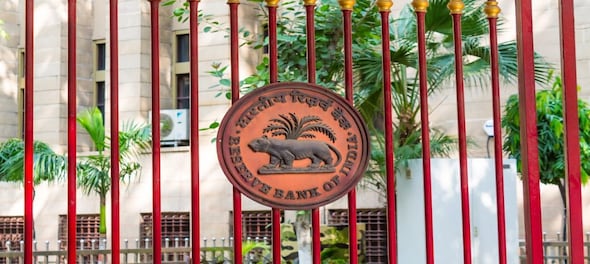
The Reserve Bank of India (RBI) may soon face a difficult policy conundrum as it waits for clarity on growth while dousing inflationary fires through words and hope, Barclays said in a recent report.
"Even though the number of COVID-19 cases is now retracing, the hit to growth appears set to last for some time. This means the RBI will once again face the question of when to exit its policy accommodation stance," Rahul Bajoria, chief economist at Barclays India said in the report.
Amid weakening growth and surging inflation, RBI is expected to maintain its accommodative stance, and to continue to rely on the government’s supply-side measures to reign in price pressures, while at the same time confirming its commitment to anchoring medium-term inflation expectations, Barclays said.
Also read:
The report said any potential rate hikes are ruled out for the current financial year, and the repo rate hike- signaling a return to policy normalization- may only happen in the first quarter of the next financial year, FY 2023.
"We think the second wave has delayed the economic normalisation cycle by a quarter or two, both in terms of GDP levels and sectoral recovery. Indeed, we now estimate that India will only reach its pre-COVID level of annual GDP by the end of 2021, compared with mid-2021 earlier; this implies two years of zero growth in activity levels. This also means that the central bank needs to wait and watch growth trends, despite a closing output gap, even if the trajectory of inflation is uncomfortable from a policy perspective," Bajoria said in the report.
Barclays had earlier highlighted an eight-step process for policy normalization by RBI earlier. This included the reduction in short term liquidity temporarily, a cash reserve ratio hike back to stated levels, which has already happened, withdrawal of moratorium on non-performing asset (NPA) recognition- which has also been implemented, switch to a 'state-based forward guidance', gradually normalise the liquidity adjustment facility corridor via reverse repo rate hike, liquidity withdrawal, repo rate hike and shift to a neutral policy stance.
"CRR hikes, variable reverse repo auctions, and a change in the RBI's guidance from time-based to state-based can be interpreted as steps closer to normalization," the report said.
Despite the repeated assurances from the RBI that it will maintain growth-supportive financial conditions, Barclays noted that there are limits to how long an inflation-targeting central bank can wait before being forced to act on evolving price dynamics.
So far, the RBI has relied on supply-side measures from the government to lower price pressures. If these moves prove ineffective, this could lead to sustained upside pressures on retail inflation, it said. Elevated headline inflation prints have already pushed household inflation expectations higher. Any sharp upward movement in rural wages remains a key trigger, according to the report.
"Given the deeply negative output gap, firms will struggle with a lack of pricing power. With a recovery slowly emerging, producers may opt to pass on increases in input costs to retail consumers faster than anticipated. This could be an inflection point for the inflation-output trade-off, triggering action from the central bank," Barclays said in the report.
Lastly, continued elevated global commodity prices could create risks to financial stability, which could warrant some interest-rate defence of the currency. RBI has cut rates by 135 basis points since the pandemic hit the country and then left the rates unchanged for six consecutive policies.
RBI Policy Decisions Since Jan 2020:
February 7, 2020:
Repo rate Unchanged At 5.15 percent
Reverse Repo Rate: 4.90 percent
MSF & Bank Rate: 5.40 percent
March 27, 2020:
Repo Rate: Cut By 75 bps To 4.40 percent
Reverse Repo Rate: Reduced By 90 bps To 4 percent
MSF & Bank Rate: Reduced To 4.65 percent from 5.40 percent
May 22, 2020
Repo rate: Reduced By 40 bps To 4 percent
MSF & Bank Rate Reduced To 4.25 percent from 4.65 percent
Reverse Repo Rate: Reduced To 3.35 percent from 3.75 percent
August 6, 2020
Repo Rate: 4 percent
MSF & Bank Rate: 4.25 percent
Reverse Repo Rate: 3.35 percent
October 9, 2020
Repo Rate: 4 percent
MSF & Bank Rate: 4.25 percent
Reverse Repo Rate: 3.35 percent
December 4, 2020
Repo Rate: 4 percent
MSF & Bank Rate: 4.25 percent
Reverse Repo Rate: 3.35 percent
February 5, 2021
Repo Rate: 4 percent
MSF & Bank Rate: 4.25 percent
Reverse Repo Rate: 3.35 percent
April 7, 2021
Repo Rate: 4 percent
MSF & Bank Rate: 4.25 percent
Reverse Repo Rate: 3.35 percent
June 4, 2021
Repo Rate: 4 percent
MSF & Bank Rate: 4.25 percent
Reverse Repo Rate: 3.35 percent
Check out our in-depth Market Coverage, Business News & get real-time Stock Market Updates on CNBC-TV18. Also, Watch our channels CNBC-TV18, CNBC Awaaz and CNBC Bajar Live on-the-go!


BJP is planning to ban RSS, says Shiv Sena (UBT) chief Uddhav Thackeray
May 18, 2024 8:01 PM
Punjab Lok Sabha elections: Complete list of Congress candidates
May 18, 2024 4:08 PM
Punjab Lok Sabha elections: Check full list of AAP candidates and constituencies
May 18, 2024 12:59 PM
PM Modi, Rahul Gandhi election rallies in Delhi today: Here are the routes to avoid
May 18, 2024 11:28 AM

